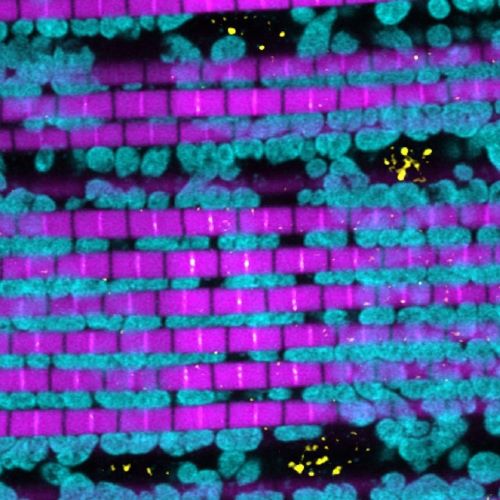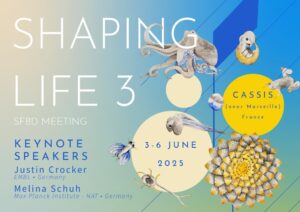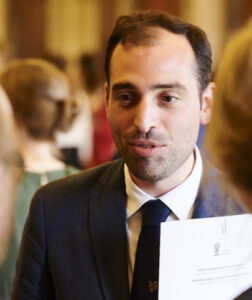Muscles under pressure: Myofibrils (magenta) and mitochondria (cyan) build up pressure on nuclei, in which Tono (yellow) responds by forming round droplets.
Muscle tissue generates large forces to power animal movements. These forces are produced by contractile filaments, called myofibrils, and the required energy is provided by cellular power plants, named mitochondria. Muscles need a particularly large amount of both to effectively produce high and long-lasting forces.
How do muscle cells know when to boost mitochondria and myofibril production during development?
By combining the Drosophila genetic toolkit with live imaging, deep sequencing and acute mechanical manipulations Xu Zhang and Jerome Avellaneda discovered that the BTB-Zn finger protein Tono is required to advance mitochondria and myofibril formation. Tono is located in the muscle nuclei and responds to the mechanical pressure exerted by developing myofibrils and mitochondria on these nuclei. Without Tono, myofibrils and mitochondria remain immature and muscles do not work. Strikingly, artificially increasing the pressure in muscle tissue results in the formation of large Tono droplets in the nuclei.
The authors propose that Tono can measure the pressure in developing muscles and thus help boosting the expression of mitochondria and myofibril coding genes at the correct time. Similar mechanosensitive BTB-Zn finger proteins may be important for muscle development in humans. These findings have now been published in Current Biology.




